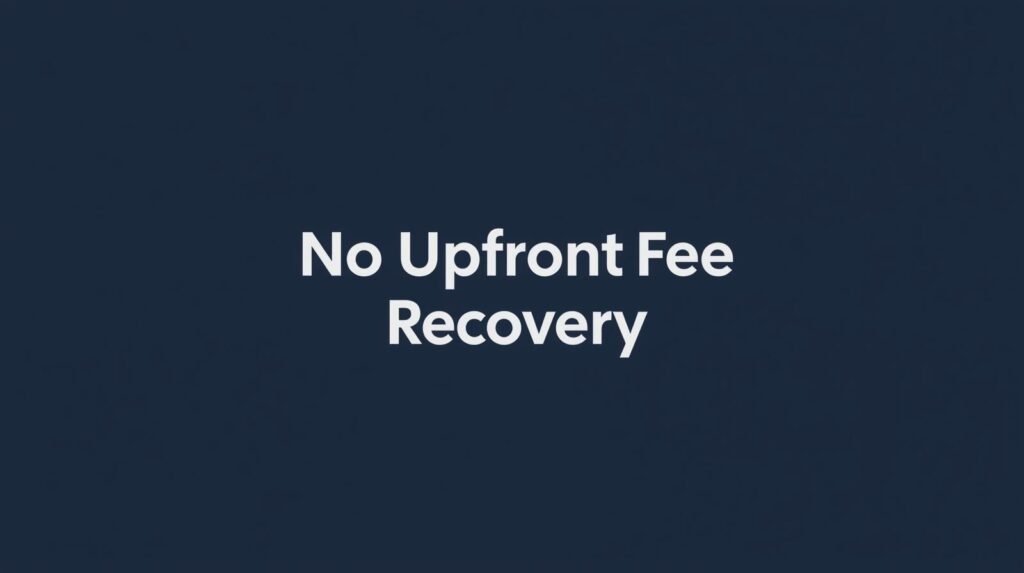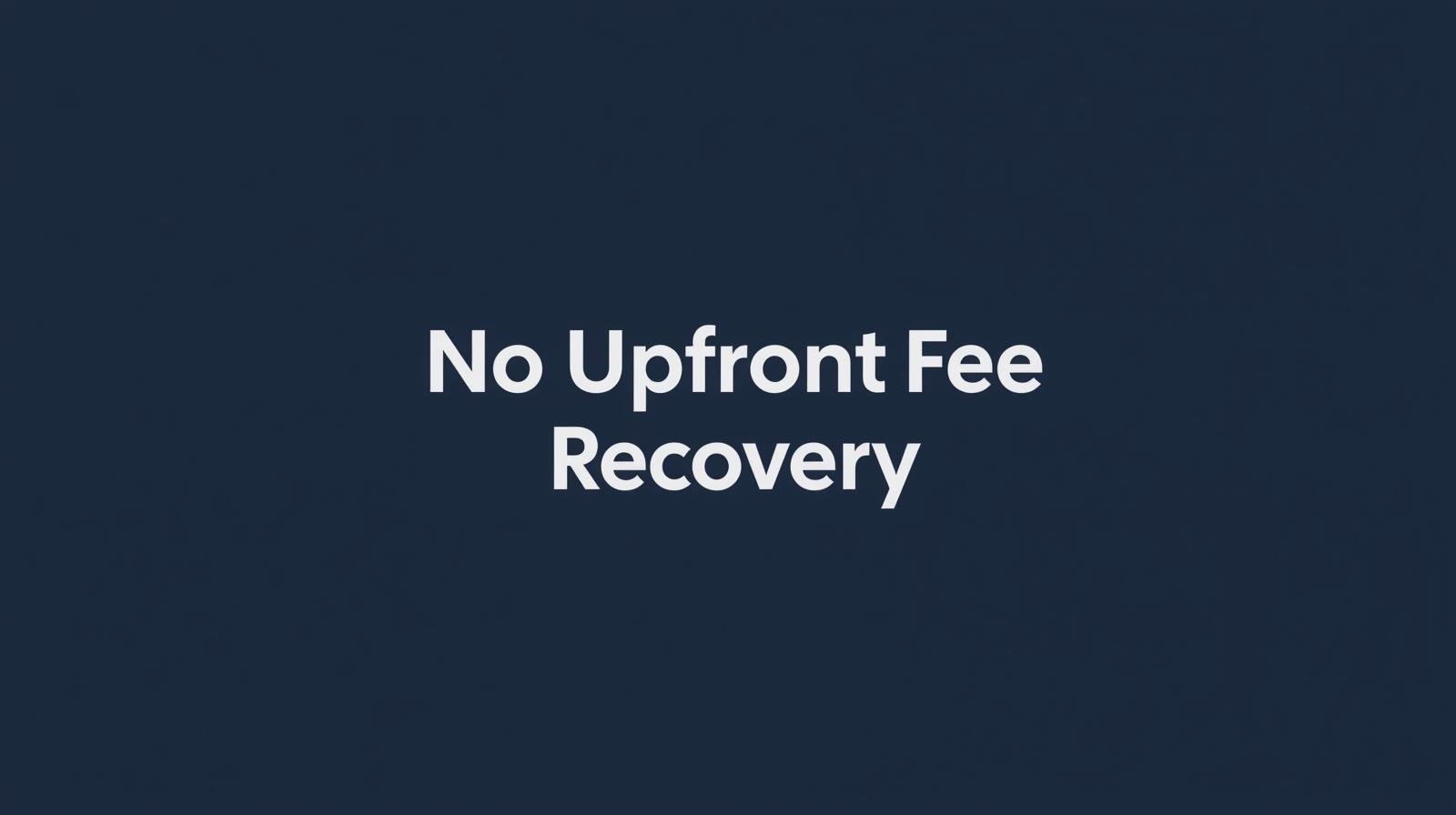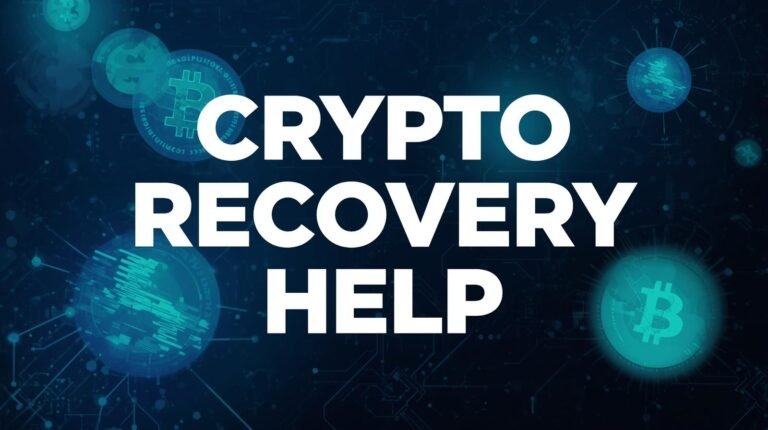
The rise of digital assets has brought opportunity—and risk. Every day, thousands fall victim to scams. The good news is that you can avoid becoming one of them. By learning the signs of a crypto scam, you can protect your funds and, if needed, report crypto scams quickly.
This guide covers the top 7 red flags. It also explains how a professional crypto recovery service can help victims recover lost cryptocurrency, whether that’s Ethereum, Bitcoin, or USDT.
Why Scammers Target Crypto Investors
Scammers love crypto for two reasons: it’s valuable, and it’s irreversible. Once stolen, funds move fast through wallets, making it hard to recover lost or stolen crypto wallets without expert help.
Popular targets include:
- Ethereum holders, often tricked with fake smart contracts.
- Bitcoin investors promised unrealistic returns.
- USDT users lured into fraudulent exchanges.
That’s why knowing the warning signs is your best defense.
Sign 1: Guaranteed Returns
If someone promises “guaranteed profits,” it’s a scam. No investment is risk-free. Real trading platforms will never guarantee a fixed profit. Victims who fall for this often need to recover stolen Bitcoin or recover Ethereum from scams later.
Sign 2: Pressure to Act Fast
Scammers push urgency. They want you to send funds quickly before you think twice. “Limited offer” or “act now” is a common scam tactic. A trusted exchange or wallet will never rush you.
Sign 3: Fake Recovery Services
Fraudsters often impersonate crypto scam recovery experts. They promise to get your money back but only steal more. Always verify a crypto recovery service before sharing details.
Sign 4: Requests for Private Keys
Never share your wallet seed phrase or private key. Real platforms never ask for this. Once scammers have it, they empty your account instantly, leaving victims struggling to recover lost cryptocurrency.
Sign 5: Unrealistic Investment Platforms
Fake exchanges or trading platforms are common. They may even show fake “profits” in dashboards. Once you try to withdraw, they vanish. Victims here often turn to a blockchain investigation service to trace crypto transactions.
Sign 6: Romance or Trust Scams
Scammers build relationships online, then ask for crypto. Victims send Ethereum, Bitcoin, or USDT, only to discover it was a trap. In these cases, it’s vital to report crypto scams and seek expert recovery support.
Sign 7: Impersonation of Authorities
Some scammers pretend to be regulators, police, or “official” recovery agents. They pressure victims into sending fees to unlock funds. Real authorities don’t operate this way.
How to Report a Crypto Scam
Spotting the signs is just the first step. Acting fast is critical. When you report crypto scams, you create a legal trail that increases your chances of recovery.
Where to report:
- Crypto exchanges – If funds were sent to an exchange wallet, notify them immediately. They may freeze the account.
- Law enforcement – File a cybercrime complaint in your country. Many regions have digital fraud units.
- Regulators – Agencies like the SEC, FCA, or ESMA can assist.
- Online fraud databases – Submitting scam details helps warn others.
Even if you believe recovery is impossible, reporting strengthens your case when working with a crypto recovery service or blockchain investigation service.
How a Crypto Recovery Service Can Help
Many victims feel helpless after losing funds. But crypto scam recovery experts use advanced tools and networks to recover lost cryptocurrency.
What they provide:
- Blockchain investigation service – To trace crypto transactions on Bitcoin, Ethereum, USDT, and more.
- Exchange collaboration – Working with compliance teams to freeze scam wallets.
- Legal support – Preparing reports for police and regulators.
- Confidential process – Protecting victim privacy.
With professional help, it’s possible to recover stolen Bitcoin, recover stolen USDT, or recover Ethereum from scams.
Real Case Studies
Case 1: Fake Trading Platform
An investor deposited USDT into a fraudulent exchange. When withdrawals were blocked, he contacted a crypto recovery service. Experts traced funds and froze wallets at a major exchange, recovering part of his loss.
Case 2: Phishing Attack
A victim shared private keys on a fake website. 3 ETH was stolen. A blockchain investigation service tracked the transfers and alerted an exchange, securing most of the stolen ETH.
Case 3: Romance Scam
A victim sent Bitcoin to someone posing as an online partner. After realizing it was fraud, they filed a report and worked with crypto scam recovery experts, successfully freezing part of the funds.
These examples prove that acting quickly and working with professionals can make recovery possible.
How to Protect Yourself from Future Crypto Scams
Recognizing the signs is powerful. But protection means building safe habits. Prevention saves you from needing a crypto recovery service later.
Key tips:
- Use hardware wallets – Store Bitcoin, Ethereum, or USDT offline.
- Enable MFA – Add multi-factor authentication to all exchanges and wallets.
- Verify platforms – Research before investing or transferring funds.
- Never share private keys – No trusted platform will ever ask for them.
- Educate yourself – Stay updated about scam trends in crypto.
These habits help ensure you never need to recover lost cryptocurrency in the first place.
Conclusion – Stay Alert, Report Quickly, Recover Smart
Crypto offers opportunity, but also danger. Scammers prey on emotions and inexperience. By knowing the top 7 signs of a crypto scam, you can act fast and avoid becoming a victim.
If you’re already affected:
- Report the crypto scam immediately.
- Work with a crypto recovery service.
- Trace crypto transactions for evidence.
- Take steps to secure your wallets.
Recovery is possible. Victims have successfully recovered stolen Bitcoin, recovered stolen USDT, and recovered Ethereum from scams with expert support.
Don’t wait until it’s too late. Protect your assets today and partner with trusted crypto scam recovery experts if needed.
FAQs – Crypto Scams and Recovery
How do I know if I’m dealing with a crypto scam?
Look for guaranteed returns, pressure tactics, or requests for private keys.
Can a crypto recovery service really help?
Yes. Experts use blockchain investigation services to trace and recover stolen funds.
What should I do first if scammed?
Secure your accounts, then report the crypto scam to exchanges and authorities.
Can stolen USDT and Bitcoin be recovered too?
Yes. Many victims successfully recover stolen Bitcoin or recover stolen USDT using expert help.
How do I trace crypto transactions?
Use block explorers like Etherscan. For advanced tracking, hire crypto scam recovery experts.
Should I pay fees to a recovery scammer?
No. Fake “recovery agents” often steal more. Always verify services.
Can I recover a lost crypto wallet?
Yes. Experts may help recover lost or stolen crypto wallets in some cases.
How long does recovery take?
It depends. Quick reporting can speed recovery, but complex scams take longer.
Why is Ethereum often targeted?
Ethereum powers DeFi and NFTs, making it a high-value scam target.
How can I prevent crypto scams?
Use hardware wallets, MFA, research platforms, and never share private keys.

Recover Lost or Stolen Crypto: Complete Guide for 2025
The rise of cryptocurrencies has transformed how people store and transfer value. But with this innovation comes a risk — lost or stolen crypto. Every year, thousands of investors report losses through hacks, phishing scams, sending coins to the wrong address, or compromised wallets. For many, the question becomes urgent: how do I recover lost or stolen crypto?
While recovery is often difficult, it is not always impossible. There are real, safe, and effective steps that can increase your chances of retrieving lost funds. This guide explores practical recovery methods, expert insights, and prevention strategies to keep your digital assets safe.
Why People Lose or Have Crypto Stolen
-
Phishing Attacks – Fake emails, links, or apps tricking users into revealing private keys.
-
Exchange Hacks – Centralized exchanges that suffer data breaches.
-
Wrong Address Transactions – Sending crypto to the wrong network or address.
-
Lost Private Keys – Misplacing recovery phrases or not backing up securely.
-
Malware or Device Hacks – Viruses that steal wallet credentials.
-
Ponzi or Investment Scams – Fraudulent platforms that disappear with deposits.
Understanding the cause of the loss is the first step in determining the right recovery method.
Can You Really Recover Lost or Stolen Crypto?
Yes — but with limitations. Because blockchain transactions are permanent, you cannot simply “reverse” them. However, through a mix of blockchain forensics, exchange collaboration, legal processes, and specialized crypto recovery experts, funds can sometimes be traced, frozen, and reclaimed.
The key is to act fast, safely, and with the right support.
Step-by-Step Guide: How to Recover Lost or Stolen Crypto
1. Stay Calm and Document Everything
Write down transaction IDs (hashes), wallet addresses, exchange names, and exact dates. Evidence is crucial for recovery.
2. Check Blockchain Explorers
Tools like Etherscan (Ethereum), BscScan (BNB Chain), or Tronscan (TRON) let you track where funds went. If the crypto was moved to an exchange, recovery may be possible.
3. Contact the Receiving Exchange or Platform
If the stolen funds landed on a centralized exchange (like Binance, Coinbase, Kraken), contact their support immediately. Provide the transaction hash and evidence. Many exchanges can freeze funds linked to suspicious activity.
4. Report to Authorities
File a police report or report to cybercrime units in your country. For larger sums, authorities often cooperate with exchanges to freeze stolen funds.
5. Work with Licensed Recovery Experts
Legitimate crypto recovery experts use blockchain forensic tools to trace stolen crypto across multiple wallets. They can prepare legal documentation and connect with law enforcement. Always choose certified and trusted professionals — avoid anyone promising “instant recovery” for upfront fees.
6. Notify the Community
Share wallet addresses involved in the theft on forums like Reddit, Twitter, or scam alert platforms. This can prevent others from falling victim.
7. Explore Insurance or Custody Protections
If your crypto was on a regulated exchange with insurance (such as Coinbase’s crime insurance policy), you may qualify for partial reimbursement.
Prevention: How to Protect Your Crypto in the Future
-
Use Hardware Wallets like Ledger or Trezor for cold storage.
-
Enable 2FA (Two-Factor Authentication) on all exchange accounts.
-
Beware of Phishing Links – always verify URLs before logging in.
-
Backup Seed Phrases Securely – never store them online.
-
Split Funds Across Wallets – don’t keep everything in one place.
-
Regular Security Audits – check devices for malware.
Remember: prevention is the most reliable form of crypto recovery.
Realistic Expectations
Not all cases can be recovered. Small amounts or peer-to-peer transfers are nearly impossible to retrieve. However, when stolen funds touch regulated exchanges or services, chances of recovery are much higher. Transparency, evidence, and quick reporting significantly improve outcomes.
FAQs – Recover Lost or Stolen Crypto
1. Can I reverse a crypto transaction?
No. Blockchain transactions are permanent and irreversible. The only option is tracing the funds and requesting cooperation from exchanges or using recovery experts.
2. I sent crypto to the wrong address. Can I get it back?
If the address exists and belongs to another person, only they can return it. If it’s an invalid address (no private key), the funds are permanently lost.
3. What should I do first after losing crypto?
Act quickly. Record transaction hashes, contact your exchange or wallet provider, and report the incident to authorities. Time is critical.
4. Do crypto recovery services really work?
Yes — but only legitimate, licensed experts. Be wary of scammers offering guaranteed recovery. Choose professionals with blockchain forensic tools and verifiable track records.
5. Can law enforcement help me recover stolen crypto?
Yes. Police cybercrime divisions often work with exchanges and forensic experts to freeze and recover stolen funds, especially for larger amounts.
6. Is it possible to recover crypto stolen months ago?
Yes, but it becomes more difficult. Funds may have been laundered through mixers. Still, experts can sometimes trace movement across wallets.
7. Are there free tools to help track stolen crypto?
Yes. Blockchain explorers like Etherscan, Tronscan, or Blockchair allow you to follow transactions. But professional tools provide deeper analysis.
8. Can I recover lost crypto without paying upfront fees?
Yes. Some legitimate experts offer free initial consultations and no upfront fee policies. Always confirm terms before working with anyone.
9. What’s the most common cause of lost crypto?
Sending funds to the wrong address or falling for investment scams are among the most common reasons.
10. How can I avoid scams while looking for recovery help?
Do not trust anyone promising 100% guaranteed recovery. Always check credentials, reviews, and ask for proof of work before engaging.
Call-to-Action (CTA)
Losing crypto is stressful — but you don’t have to face it alone. With the right steps, trusted recovery experts, and immediate action, your chances of restoring funds increase significantly.
👉 If you’ve lost USDT, Bitcoin, Ethereum, or any other cryptocurrency, contact a trusted crypto recovery specialist today for a free consultation. No upfront fees, transparent process, and expert guidance every step of the way.
Conclusion
Recovering lost or stolen crypto isn’t easy, but it is possible with the right tools, expertise, and quick response. Document every detail, contact exchanges immediately, involve authorities, and lean on trusted recovery experts.
Crypto is here to stay, and while risks exist, taking proactive measures and acting swiftly in times of crisis can mean the difference between permanent loss and successful recovery.
Don’t give up — act today. Your assets may still be within reach.


